- Home
- Simon Winchester
The Map That Changed the World Page 2
The Map That Changed the World Read online
Page 2
There was another, precisely similar, ghetto of prisons on the south side of the Thames, in the area that, then technically beyond London, was the borough of Southwark: another small huddle of grim, high-walled mansion houses of punishment and restraint—the Clink, the Marshalsea, the Bedlam prison-hospital, and, formidable in appearance and reputation, just like its sister establishment back at Number Nine, the infamous barrackslike monstrosity of the Prison of the King’s Bench.
The principal prisons—including those for debtors—in London, 1819. Smith was languishing in Southwark, in what is noted here as King’s Bench Prison II.
1. Cold Bath Fields
2. Clerkenwell Bridewell
3. New Prison, Clerkenwell
4. Fleet Prison
5. City Bridewell
6. Ludgate Prison I
7. Newgate Prison
8. Giltspur Street Compter
9. Wood Street Compter
10. Poultry Compter
11. Ludgate Prison II (after 1760)
12. The Tower
13. Borough Compter
14. The Clink
15. Marshalsea Prison
16. King’s Bench Prison I
17. White Lion Gaol
18. County Gaol for Surrey
19. King’s Bench Prison II (after 1758)
20. St. George’s Fields Bridewell
The King’s Bench, the nearby Marshalsea, and the Fleet were different from most London prisons. They were very old, for a start, and were privately run according to a set of very strange rituals. They had been instituted for a sole purpose—the holding, for as long as necessary, of men and women who could not or would not pay their bills. These three institutions were debtors’ prisons—and the reason that crowds formed around their entrances each sunrise is that, every morning just after dawn, it was the policy of their wardens to free those inmates who had discharged their obligations.
Of the three the Fleet had the most intriguing entranceway. On either side of the gate was a caged window, and above it the motto “Remember the Poor Debtors, Having No Allowance.” Through the grate could be seen a small and gloomy chamber, with nothing inside except a wooden bench. A doorway beyond, locked and barred from the outside, gave access to the main cellblock. Each day a new impoverished prisoner would be pushed out into the cage—to spend the next twenty-four hours on begging duty, pleading with passersby for money to help in his or her plight. Debtors were obliged to pay for their time in prison; those who turned out to be totally out of funds were forced to go into the grated room and beg.
The crowds outside the Fleet and the King’s Bench prisons on that cool August Tuesday morning, and that so interrupted the progress of men of affairs on their ways along the granite setts with which the road in Southwark and Saint Paul’s had recently been paved, were there to see a spectacle. Tourists came to the jails to see the beggars; the merely curious—as well as the small press of family and friends (and perhaps some still-unsatisfied creditors)—came to greet with amiable good cheer the small group of inmates who each day would emerge, blinking, into the morning sunlight.
According to the prison records, one of the half dozen prisoners who stepped free from behind the high walls of the King’s Bench Prison on that Tuesday morning was a sturdy-looking yeoman whose papers showed him to have come from Oxfordshire, sixty miles west of London. Those few portraits painted of him in his later years, together with a single silhouette fashioned when he was in his dotage, and a bust sculpted in marble more than twenty years later, show him to be somewhat thickset, balding, with a weatherbeaten face.
Some less charitable souls might call him a rather plain-looking man, even, in truth, a little ugly. His forehead slants backward, a trifle alarmingly. His nose is somewhat too large for comfort. His mutton-chop whiskers are wayward. But in most of the pictures he seems to be wearing an expression that serves by way of compensation for the facial shortcomings: He seems, from his looks, at once tolerant, kindly, and perhaps even vaguely amused by the droll complexities of his life.
At the time of his release from jail he was fifty years old, and he must have emerged from the main gate into the Southwark crowds that day in an embarrassed and fretful state. He had good reason to be anxious: The previous four years of his life had been trying, racked by debt and uncertainty, by privation and public humiliation. And, as he was soon about to learn, only a matter of hours after his release, his trials were far from over.
The address of his lodgings was given in bankruptcy court as number 15, Buckingham Street, and it was to this imposing stone mansion, in which he had lived for the previous fourteen years, that he now walked, alone. He had spent the better part of the last ten weeks in the miseries behind the bars of the King’s Bench, living for most of that time in a crowded cell, a chummage, with two or three others similarly ruined. Now he had his freedom and the pleasure of his own company. He quickened his pace—he was a staggeringly fast walker—as he strode steadily westward to his house.
It was a short enough walk. He had his choice of bridges across the Thames, and had only to turn left when he had made it over the fetid and polluted river with its muddily inelegant banks. He walked steadily along the entire length of the Strand—newly outfitted with the cast-iron lamps of the Gas-Light and Coke Company—and past familiar churches, shops, tailors, and alehouses.
The streets here, by now some distance from the prisons, pulsated with all the elegance and gaiety of Regency times. This, after all, was the day of Beau Brummell (though Brummell himself had only three years before left London for France, preparing for his own date with debtors’ prison—and his subsequent death in a French lunatic asylum). The street that morning would have been crowded with the dandies who (their newly invented umbrellas sheltering them from the showers) followed the strict particulars of his style.
The entire stretch along which the glum but relieved Oxfordshire convict walked spoke all too gaudily of money and amusement and brio—a sharp contrast, no doubt, to the grim mood of the man who passed among them. In ordinary circumstances he might have stopped at number 181, the elegant bow-windowed building where his best friend, the noted cartographer John Cary, had his offices; but this particular morning he was in a hurry and eager to move on.
It took him ten minutes to pass the length of the Strand, after which he turned off left—Trafalgar Square had not yet been built to act as a landmark—and into that small maze of fashionable Georgian neoclassical houses that had been put up by the four Adam brothers half a century before and that they had named, after adelphoi, the Greek word for brothers, “the Adelphi.”
Down he strode, past the Savoy, along John Adam Street, and finally into Buckingham Street itself, and up to the front door of number 15.
The door to his house, he was shocked to find, was shut and bolted. A tipstaff stood outside, on sentry duty, and there was a notice pinned to the woodwork: The landlords had repossessed the house and had emptied it of much of its furnishings and papers. Work was still going on; the officer was on hand to ensure that no one—and in particular this one man—attempted to gain entry.
To make doubly certain, the bailiff asked for the man’s name. William Smith, the arrival replied. There was an expression of mumbled regret, and the burly sentry took up a stance with his arms folded in front of him, brooking no argument. No, he could not come in. William Smith, beaten down yet again, but now determined not to suffer the indignity of confrontation, turned away.
There was a particularly cruel and desperate irony in this situation. On the following morning, the Wednesday, the same John Cary at whose offices Smith might well have chosen to call, was due to publish in book form the second part of a formidable new collection of geological maps, the latest volume of what was coming to be recognized as one of the most profoundly important books ever made.
Cary’s great new Geological Atlas of England and Wales had been begun four years before, when the cartographer and his apprentice son, George, had labor
ed mightily to issue a work that was as scientifically epochal as it was physically majestic—the finely engraved, hand-colored map, the eight and a half feet high by six feet wide triumph of cartographic brilliance that was formally called A Delineation of The Strata of England and Wales with a part of Scotland, but that has been known ever since as the first large-scale national geological map.
It was a document that was to change the face of a science—indeed, to create a whole new science—to set in train a series of scientific movements that would lead, eventually, to the inquiries of Charles Darwin, to the birth of evolutionary theory, and to the burgeoning of an entirely new way for human beings to view their world and their universe. The inevitable collision between the new rationally based world of science and the old ecclesiastical, faith-directed world of belief was about to occur—and in the vanguard of the new movement, both symbolically and actually, was the great map, and now this equally enormous atlas that John Cary of the Strand was about to publish, and the revolutionary thinking that lay behind their making.
Both works were the creations of William Smith, the yeoman from Oxfordshire, who, on the very eve of publication, was now being turned away from the marble steps in front of the house in which he had lived and worked for so long. And yet, however much of an embarrassment this must have been, the situation was not wholly unfamiliar to him. For although William Smith’s years of careful observation and his wholly innovative ways of thinking were about to alter the course of scientific inquiry forever, he had at the same time been forced to wage what must have seemed a ceaseless war against his own humiliation and ill fortune, forced to waste his energies raging against the cheating and class discrimination that seemed, time and again, to frustrate him.
And here he was now, without a home, without possessions, without any evident future—and yet with his new book, his new great work of science, his masterpiece of craftsmanship and endeavor, about to be offered to the public once again. His situation must have seemed grim indeed, and the brutality of coincidence can hardly have escaped him.
Precisely how William Smith reacted during the rest of that wretched day goes unrecorded. It would be tempting to suppose that he marched swiftly back up to John Cary’s office that very afternoon and borrowed money, taking an advance against the sale of his atlas, which would be published the following morning. All that is known, however, is that he decided there and then that he would turn his back on the London that, in his view, had so contributed to his ruin.
So he found and collected his wife, he found and collected the nephew who also then lived with them, and he gathered together what few possessions the two of them, in being turned with evident haste out of the Adelphi house a few days before, had managed to save for him. He made his way across the crowded capital to the Black Swan Inn at Holborn, which was known as the principal stagecoach terminal for travelers making their way to Edinburgh via the Great North Road.
During the summer there was a northbound coach every other day, and if he was lucky* he might even on that same night have won three seats and have been thundering northward in a rocking carriage behind the four great fire-breathing horses of the Northern Mail. His driver would carry him and his fellow passengers maybe sixty miles a day, and so the next morning would see him at Peterborough, then Stamford, then Grantham.
Finally the coach reached the small Yorkshire post town of Northallerton, and this is where, bone weary and hungry, William Smith finally got down and began the process, much like any itinerant tradesman or journeyman, of looking for custom and for work.
“The man might be imprisoned—but his discoveries could not be,” he was to write some years later.† “London quitted with disgust. The cheering fields regained.”
It was to be twelve years before William Smith returned to spend much time in London. The man who was hurtling and banging his way northward on that summer evening stagecoach, was then at the low point of his life—a life that, when recounted in as full a manner as the evidence allows, turns out to have been more honorable, more deservedly honored, and on a world scale much more important than he, at that moment, could have imagined.
2
A Land Awakening from Sleep
Amaltheus margaritatus
William Smith was born into a world of dogma, faith, and certainty, into a conservative English society that his own discoveries and theories would one day help shake to its very foundations.
And yet already—however conservative the mood of the early eighteenth century may have seemed—there are signs that, viewed from today’s perspective, suggest that even at the time of his birth it was imperceptibly readying itself for all that discoverers like Smith would find and do. In countless ways, both great and small, the faiths and certainties of centuries past were being edged aside, and the world was being prepared, if gently and unknowingly, to receive the shocking news of scientific revelation.
Not that any of the vague subtleties of coming change had reached very far. William Smith was born, the first son of the local blacksmith in the hamlet of Churchill in Oxfordshire, on March 23, 1769. It was a measure of the rigor and certitude of both the place and the times that there could be great canonical precision about such a moment. To religious folk—and most English country folk of the time were religious, their daily rhythms set by the steeple bell, their manners regulated from the parsonage—the event that gave a firstborn child to John and Ann Smith in their cottage on the edge of the green in Churchill took place, according to their implacably held beliefs, exactly 5,772 years, four months, and sixteen days after the creation of the world.
Any student of the Bible could have been quite certain about this figure—in fact he or she could have been quite certain as to the very number of hours since the Creation, had the Churchill midwife been scrupulous enough to note the time of the infant’s birth. A quick calculation could be made on the basis of an almost unchallenged belief about human origins that was then held by most men and women who lived deep in the English shires—the notion that the world had been brought swiftly into existence exactly 4,004 years before the birth of Christ.
Lest anyone forget, all the Bibles that were in use at the time had dates printed in bold scarlet letters in the margins, annotations to the verses of the Old Testament, designed to act as a gentle reminder. “In the beginning, God…” had the number “4004 B.C.” written beside it; the text of the Holy Scriptures’ subsequent dramas, from Cain and Abel onward, had progressively lower and lower red-printed figures in the margin, until the events in the manger in Bethlehem, by which time the figure had been cycled down to zero.
The dating of the Bible was very much an idea of the later Middle Ages. It had taken decades for anyone to come up with credible numbers. In an effort to do so, scores of scholarly zealots had carefully analyzed the basic biblical idea—which had never, after all, volunteered an age for the earth, merely the manner in which it had come about—by sedulously counting the number of human generations they believed to have come and gone between the making of Adam and the begetting of Christ. On the basis of their workings it was reckoned, at the close of the sixteenth century, that the world was, give or take, six thousand years old.
It was left to the genial Irish prelate James Ussher, while he was bishop of Armagh, to fix the date with absolute precision. According to his workings, which he managed to convince his clerical colleagues were impeccably accurate, God had created the world and all its creatures in one swift and uninterrupted process of divine mechanics that began on the dot of the all-too-decent hour of 9 A.M., on a Monday, October 23, 4004 B.C.
The cynical and the skeptical may need some reminding of the fine print—of just what was preached in the church in which William Smith was baptized, of the kind of firm beliefs with which his community was invested. Whatever interest Smith the man might later develop in fossils, geology, and the makings of humankind, at the time he was born there was no question: The entire process of Creation had taken God the familiar six day
s, and he had begun it 5,772 years before.
James Ussher’s dating of Creation is part of the rubric of a Bible from William Smith’s lifetime.
At the start of that late October week, in the year that a modern Christian calendar would style 4004 B.C., the Deity organized the basic concepts of light and dark, sun and moon, wet and dry. He then made every ocean, inlet, river, sandbar, meadow, desert, mountain, icecap, and fjord: The structure of the world, its topography, and the geology that forms the core of this story were complete. By the morning of the twenty-sixth, the Thursday, God had seen to it that life had been begun, and by that evening every first microbe, newt, spider, serpent, eagle, cat, horse, and monkey had been duly set in place, to creep, crawl, swim, fly, leap, spring, and deploy its opposable thumb to climb.
By the following day the botanical phyla were all in place: Every rain forest, grassland, savanna, peony, orchid, rose, palm, apple, pine, and daisy had been left on earth, contentedly to bloom. All of Milton’s “rocks, caves, lakes, fens, bogs, dens” were now fully accumulated: An earthly paradise was set, ready to be lost.
And by the Saturday, most important of all, emerged those creatures who would lose it. The first two examples of ur-human, in the bipedal and upright (but otherwise subtly different from each other) forms of Adam and Eve, had been created in the Garden of Eden. They were at this stage blissfully unaware, of course, and therefore untroubled by the Fall (which would come later, via the agency of the already created serpent and apple).

 The Surgeon of Crowthorne
The Surgeon of Crowthorne Korea: A Walk Through the Land of Miracles
Korea: A Walk Through the Land of Miracles The Men Who United the States: America's Explorers
The Men Who United the States: America's Explorers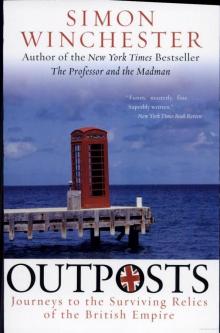 Outposts: Journeys to the Surviving Relics of the British Empire
Outposts: Journeys to the Surviving Relics of the British Empire Atlantic: Great Sea Battles, Heroic Discoveries, Titanic Storms
Atlantic: Great Sea Battles, Heroic Discoveries, Titanic Storms The Professor and the Madman: A Tale of Murder, Insanity
The Professor and the Madman: A Tale of Murder, Insanity A Crack in the Edge of the World
A Crack in the Edge of the World The Perfectionists: How Precision Engineers Created the Modern World
The Perfectionists: How Precision Engineers Created the Modern World The Man Who Loved China: The Fantastic Story of the Eccentric Scientist
The Man Who Loved China: The Fantastic Story of the Eccentric Scientist The River at the Center of the World: A Journey Up the Yangtze
The River at the Center of the World: A Journey Up the Yangtze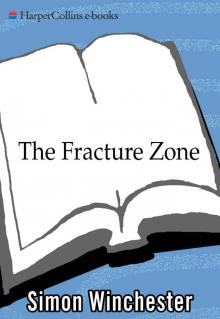 The Fracture Zone: My Return to the Balkans
The Fracture Zone: My Return to the Balkans The Map That Changed the World
The Map That Changed the World Krakatoa: The Day the World Exploded
Krakatoa: The Day the World Exploded The Man Who Loved China
The Man Who Loved China The River at the Centre of the World
The River at the Centre of the World Bomb, Book and Compass
Bomb, Book and Compass The Perfectionists
The Perfectionists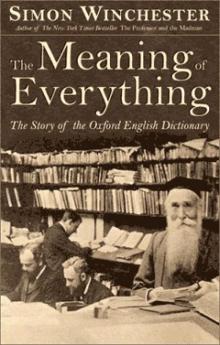 The Meaning of Everything
The Meaning of Everything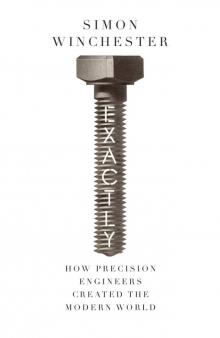 Exactly
Exactly Atlantic
Atlantic Korea
Korea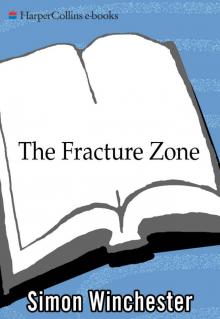 The Fracture Zone
The Fracture Zone Pacific
Pacific Krakatoa
Krakatoa The Professor and the Madman
The Professor and the Madman Outposts
Outposts